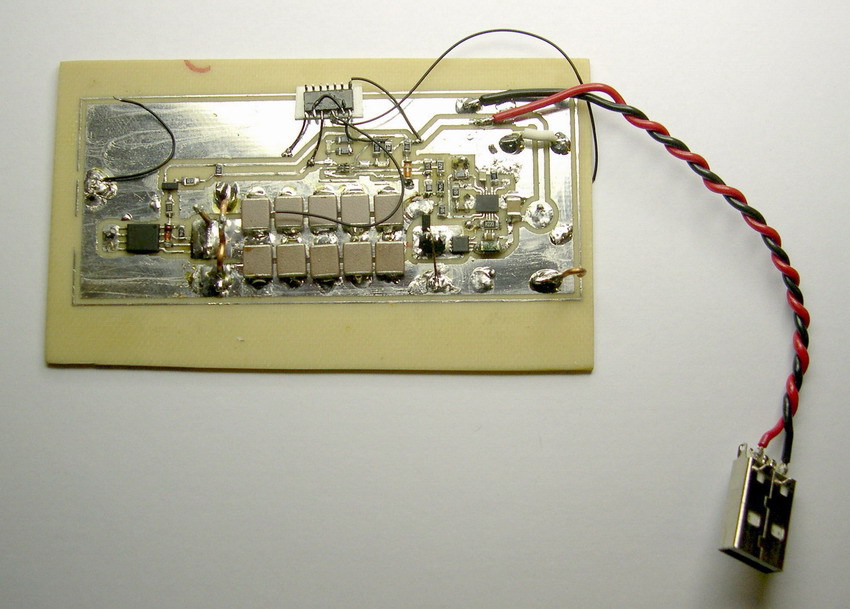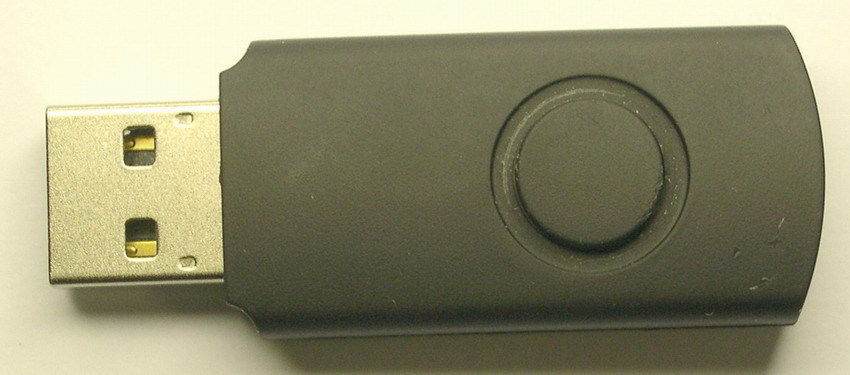USB killer
It was an ordinary gloomy winter morning, my colleagues and I, as usual, drank morning coffee, shared news, and nothing signaled trouble. But then a friend told me ... more quote from skype chat:
A picture to attract attention:

Since I work in an enterprise that develops and manufactures electronics, my colleagues and I began to actively discuss options for implementing such a flash drive, which “would burn a half-computer.” There were a lot of hardcore, fantastic, and also very real options . And everything would have ended with this fun discussion, if I had not intended to order the manufacture of printed circuit boards for my other projects.
So, the USB interface of a computer, as a rule, includes a USB connector -> ESD diodes (protection against static) -> filter elements -> security elements in the chip itself, containing the physical layer of the USB interface. In modern USB computers, “physics” is almost integrated into the processor itself; in computers a bit older, north-south bridges are responsible for USB. The task of the developed flash drive is toburn the whole thing , burn the USB port at least.
Within a week, I developed a very specific circuitry implementation, ordered components, and after several months of waiting for the components, a fully functional prototype was assembled. The idea itself was tested and everything that was possible was “burned”.

Further, printed circuit boards in China were developed and ordered, a combat prototype was mounted.
Hand-soldered by me, the installer of me is so-so.


It was made under the body of a conventional flash drive.

The principle of operation of the flash drive itself is quite simple. When connected to the USB port, the inverting DC / DC converter starts up and charges the capacitors to a voltage of -110V, when this voltage is reached, the DC / DC is turned off and the field effect transistor is opened through which -110V is applied to the signal lines of the USB interface. Further onfallingincreasing the voltage across the capacitors to -7V, the transistor closes and starts DC / DC. And so in a cycle until everything breaks through. The inquiring mind of a reader familiar with electronics has already figured out why a negative voltage is used, for others I will explain that it is easier to switch negative voltage, since an N-channel field effect transistor is needed, which, unlike a P-channel, can have a much larger current with the same dimensions.
I will not speak about the scope, but a former colleague says that it’s like an atomic bomb, it’s cool to have it, but you can’t use it.
I once read an article as a guy in the subway pulled a flash bag from 128 in the subway net from the mesh pocket, on which 128 was written. He came home, put it in a laptop -> he burned the floor of the computer ... He wrote on a flash drive 129 and now wears his bag in the outer pocket ...
A picture to attract attention:

Since I work in an enterprise that develops and manufactures electronics, my colleagues and I began to actively discuss options for implementing such a flash drive, which “would burn a half-computer.” There were a lot of hardcore, fantastic, and also very real options . And everything would have ended with this fun discussion, if I had not intended to order the manufacture of printed circuit boards for my other projects.
So, the USB interface of a computer, as a rule, includes a USB connector -> ESD diodes (protection against static) -> filter elements -> security elements in the chip itself, containing the physical layer of the USB interface. In modern USB computers, “physics” is almost integrated into the processor itself; in computers a bit older, north-south bridges are responsible for USB. The task of the developed flash drive is to
Within a week, I developed a very specific circuitry implementation, ordered components, and after several months of waiting for the components, a fully functional prototype was assembled. The idea itself was tested and everything that was possible was “burned”.

Further, printed circuit boards in China were developed and ordered, a combat prototype was mounted.
Oftop.
Sailboats ordered here . I’m terribly not satisfied with the quality - copper seems to be nothing, but the mask falls off, silk-screen printing is generally horrible. Consider anti-advertising.
Hand-soldered by me, the installer of me is so-so.


It was made under the body of a conventional flash drive.

The principle of operation of the flash drive itself is quite simple. When connected to the USB port, the inverting DC / DC converter starts up and charges the capacitors to a voltage of -110V, when this voltage is reached, the DC / DC is turned off and the field effect transistor is opened through which -110V is applied to the signal lines of the USB interface. Further on
I will not speak about the scope, but a former colleague says that it’s like an atomic bomb, it’s cool to have it, but you can’t use it.
UPD_18mar2015:
In connection with the appearance on the Internet of many copies of my article, as well as translations into other languages, allegedly with my authorship, I inform readers that I published the article only on the habrahabr.ru website and nowhere else.
For any questions, write here: darkzpurple@gmail.com
For any questions, write here: darkzpurple@gmail.com
Only registered users can participate in the survey. Please come in.
Arriving at work in the morning, you found a USB drive on your desk, your actions?
- 81.6% I will insert it into the USB port in order to get acquainted with the contents. 7383
- 18.3% Throw in the trash. 1660
Some demand for the device, prompted to count potential buyers
- 62.8% I would buy. 5600
- 37.1% No thanks. 3310
